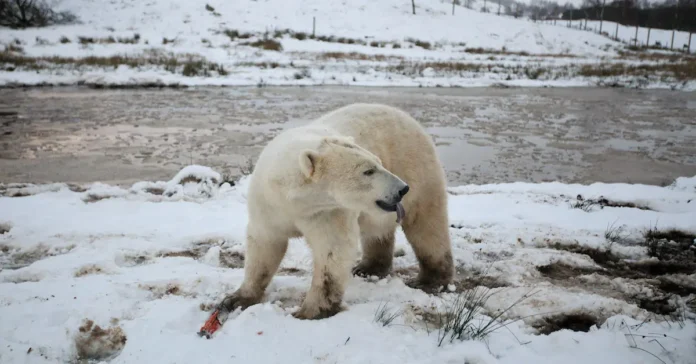Temperature Rise and Species Migration
Rising global temperatures and global warming are direct results of climate change and have significant impacts on ecosystems. As average temperatures climb, many species are forced to migrate toward cooler environments. For example, polar bears, which rely on sea ice for hunting seals, are experiencing habitat loss as ice melts in the Arctic. Similarly, alpine plants and animals are moving up in elevation in search of cooler temperatures. This shift in habitats due to the impact of climate change can disrupt local ecosystems, leading to potential declines or extinctions of species that cannot adapt quickly enough.
Precipitation Changes and Freshwater Systems
Changes in precipitation patterns are also a major consequence of climate change. Some regions are experiencing increased rainfall and flooding, while others face severe droughts. These changes can drastically affect freshwater ecosystems. Aquatic species, such as fish and amphibians, depend on stable water levels and quality. Altered precipitation can lead to habitat degradation, reduced water availability, and changes in water temperature, which in turn affect species survival and ecosystem health.
Ocean Acidification Effects
The ocean absorbs a significant amount of the excess carbon dioxide (CO2) produced by human activities, leading to increased ocean acidification. This change in the ocean’s chemistry is particularly harmful to marine organisms that rely on calcium carbonate to build shells and skeletons, such as corals, mollusks, and some types of plankton. Coral reefs, which support a diverse array of marine life, are especially vulnerable. Coral bleaching, driven by higher sea temperatures and acidification, leads to the loss of these critical ecosystems, impacting the myriad species that depend on them.
Biodiversity Loss
Climate change poses a significant threat to global biodiversity. Alterations in habitat conditions, coupled with the introduction of invasive species that thrive under new climate conditions, can lead to shifts in species composition and ecosystem function. The impact of climate change reduces biodiversity, diminishing the resilience of ecosystems and making them less capable of providing essential services such as pollination, nutrient cycling, and soil fertility. This, in turn, affects human livelihoods and well-being, highlighting the interconnectedness of natural systems and human societies.
Feedback Mechanisms
Climate change can create feedback loops that amplify its effects. For example, as ice caps and glaciers melt, they reduce the Earth’s albedo (reflectivity), causing more solar radiation to be absorbed and accelerating global warming. Additionally, thawing permafrost releases methane, a potent greenhouse gas, further exacerbating the warming effect. These feedback mechanisms can push ecosystems past tipping points, leading to irreversible changes and further destabilization due to the impact of climate change.
Adaptation and Conservation
To address the impacts of climate change, a combination of adaptation and mitigation strategies is essential. Adaptation efforts include creating protected areas, restoring degraded habitats, and managing invasive species to help ecosystems adjust to changing conditions. Mitigation involves reducing greenhouse gas emissions to slow the rate of climate change. Integrating climate considerations into conservation planning and promoting sustainable practices are vital for maintaining ecosystem health and resilience.
Ecosystem Resilience
Enhancing ecosystem resilience is crucial for coping with the impacts of climate change. This involves not only protecting existing natural areas but also implementing strategies that bolster ecosystems’ ability to recover from disturbances. Sustainable land use practices, conservation of biodiversity, and effective management of natural resources are key components of building resilience.
Global and Local Impacts
The effects of climate change are both global and local. While the overarching patterns of global warming and shifting weather systems are evident worldwide, the specific impacts can vary greatly between regions. Tailoring solutions to address these diverse challenges is essential for effective management and conservation efforts. By understanding and addressing both global trends and local conditions, we can better protect ecosystems and ensure their sustainability in the face of a changing climate.
READ MORE
Sports and Society: Reflecting Cultural Shifts
The Balancing Act: Climate Change Politics
The Rise of Populism and Its Impact on Democracies Worldwide
The Entrepreneur’s Playbook: Strategies for Success in a Dynamic Market
The Geopolitical Shifts of the 21st Century: Navigating a Multipolar World




